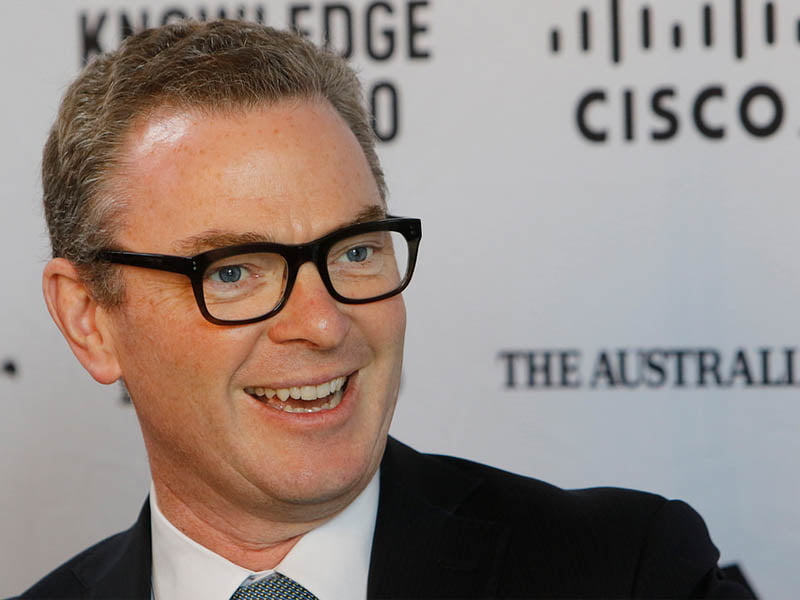Defence Industry Minister Christopher Pyne has spruiked a revival in Australia’s defence industry participation while aiming to squeeze more local involvement from foreign companies bidding on projects above $20 million.
The Indo-Pacific region we occupy puts us in the sights of plenty of firepower, Mr Pyne said.
“We sit in the heavily militarised Indo-Pacific region – a region which we share with seven of the world’s 10 largest standing militaries and five of the world’s declared nuclear nations,” he told the Global Access Partners Annual Economic Summit.

“North Korea’s nuclear provocations have taken us into dangerous new territory.
“We face a challenging strategic environment. Australians can no longer consider themselves far removed from strife.”
Australia must maintain ‘free and uninterrupted passage’ through the region’s strategic sea-lanes and at the same time build ‘a new sovereign defence sector’ bristling with a ‘culture of innovation’ and ‘smart manufacturing industries.’ The
The good guys and gals helping bolster fortress Australia would be ‘strong, smart and resilient small to medium enterprises’
The Defence Industry Policy Statement found defence industries consisted of over 3,000 SMEs, employing over 25,000 people last year. The number has since grown, said Mr Pyne.
“They are vital to the preparedness of our current military forces and their ability to conduct operations; the development of future military capabilities and the ability of our nation to quickly mobilise industrial resources during times of crisis and conflict, Mr Pyne told the summit.
Up for grabs for these SMEs would be a share in the $200 billion the Turnbull government plans to spend on defence over the next decade, should it retain office.
Spruiking the bundle of defence bound moolah as an ‘investment’ rather than a ‘cash splash’, Mr Pyne said the effort was designed to tickle up innovation and give Australian workers better skilled careers as well as arming the Australian Defence Forces for the twenty-first century.
While he welcomed the involvement of the traditional military industrial complexes that have sold us warfare goodies in the past, the minister said he was ‘expecting more from our international partners and contractors.’
“The 2016 Defence Industry Policy Statement is driving an agenda to maximise opportunities for the involvement of Australian industry in meeting the capability needs of the ADF,” he told the summit.
“We are growing our sovereign industrial base to meet our defence needs and to maximise expenditure of Australian taxpayer dollars here in Australia.
“We have placed stronger requirements on tenderers for our major capital projects – those worth $20 million and above – to look for more opportunities to involve Australian industry and to build enduring industrial capability that can be used to meet broader defence needs.
“We have also sought clear strategies for technology transfer, innovation and opportunities for Australian small to medium enterprises to be part of international supply chains,” he said.
There was a time immediately before, during and following World War 2 when Australia was capable of highly advanced defence manufacturing and design. The Commonwealth Aircraft Corporation not only licence built a version of the legendary Mustang fighter as well as a range of trainer aircraft, the stop-gap Boomerang fighter and the Pratt and Whitney R1340 aircraft engine, but also designed and developed the CAC-15 Kangaroo, a piston engine fighter superior to the Mustang.
Later, CAC developed the Avon Sabre, a variant of the North American F86 Sabre that outclassed the original in performance.
Mr Pyne marked Thales Australia and Austal as defence oriented locals who can hold their own in the global marketplace.
“I want to see more of our defence companies join their ranks,” Mr Pyne said.
He also singled out Ferra Engineering in Brisbane, which pivoted from the automotive to the aerospace sector in 2002 and had become a trusted supplier to the likes of Boeing, Lockheed Martin and Northrop Grumman.
Ferra’s local supply chain now involves 30 other Australian companies and 87 per cent of Ferra’s products made here go into platforms like the F-35 Joint Strike Fighter, the Triton Unmanned Aerial System and MH60 Romeo helicopter.
“This is exactly the type of midsize business success story we are working to replicate through our vision for the Australian defence industry,” said Mr Pyne.
“We believe midsize businesses will be key to our vision for a new Australian defence sector and are doing everything we can to enable their success,” he said.
Do you know more? Contact James Riley via Email.

